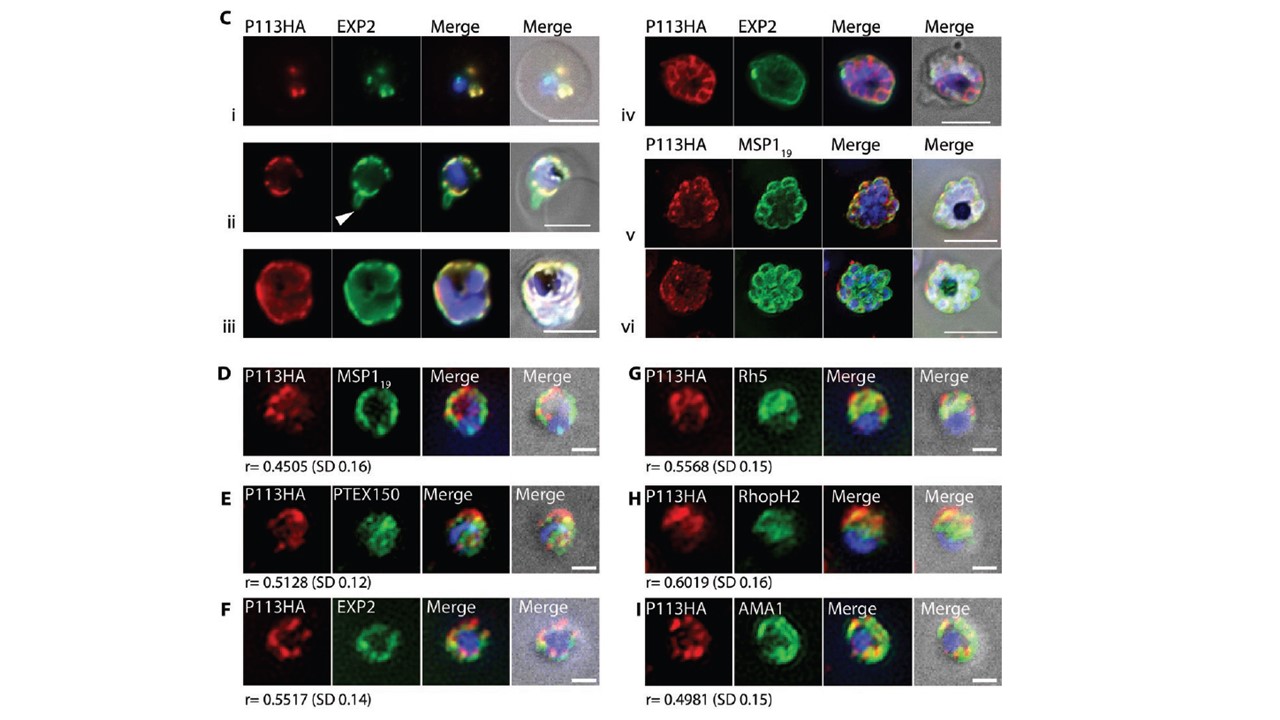P113 colocalises with PTEX components throughout the intraerythrocytic cycle. C. Immediately post invasion in ring stages (i) P113 colocalises with PTEX component EXP2 at the PV and maintains this localisation throughout the intraerythrocytic lifecycle in trophozoites (ii) through to early schizonts (iii). In mid-schizonts (iv) the PPM but not the PVM begins to invaginate around the developing merozoites. P113 can be detected around the nascent merozoites demonstrating P113 localises to the PPM face of PV space. In late-stage schizonts (v/vi), P113 is no longer clearly present at the PPM as indicated by only partial co-labelling with the PPM marker MSP119. Instead P113 (possibly newly synthesised) appears to reside within internal structures, likely nascent secretory organelles. Scale bars: 5 μm. White arrow: PVM bleb. D-I. Immunofluorescence assays of merozoites co-labelled with HA (P113HA) and the PPM marker MSP119 (D), the dense granule markers PTEX150 (E) and EXP2 (F), the rhoptry markers Rh5 (G) and RhopH2 (H) and the microneme marker AMA1.
Bullen HE, Sanders PR, Dans MG, Jonsdottir TK, Riglar DT, Looker O, Palmer CS, Kouskousis B, Charnaud SC, Triglia T, Gabriela M, Schneider MP, Chan JA, de Koning-Ward TF, Baum J, Kazura JW, Beeson JG, Cowman AF, Gilson PR, Crabb BS. The Plasmodium falciparum parasitophorous vacuole protein P113 interacts with the parasite protein export machinery and maintains normal vacuole architecture. Mol Microbiol. 2022
Other associated proteins
| PFID | Formal Annotation |
|---|---|
| PF3D7_0424100 | reticulocyte binding protein homologue 5 |
| PF3D7_0929400 | high molecular weight rhoptry protein 2 |
| PF3D7_0930300 | merozoite surface protein 1 |
| PF3D7_1133400 | apical membrane antigen 1 |
| PF3D7_1436300 | translocon component PTEX150 |
| PF3D7_1471100 | exported protein 2 |
